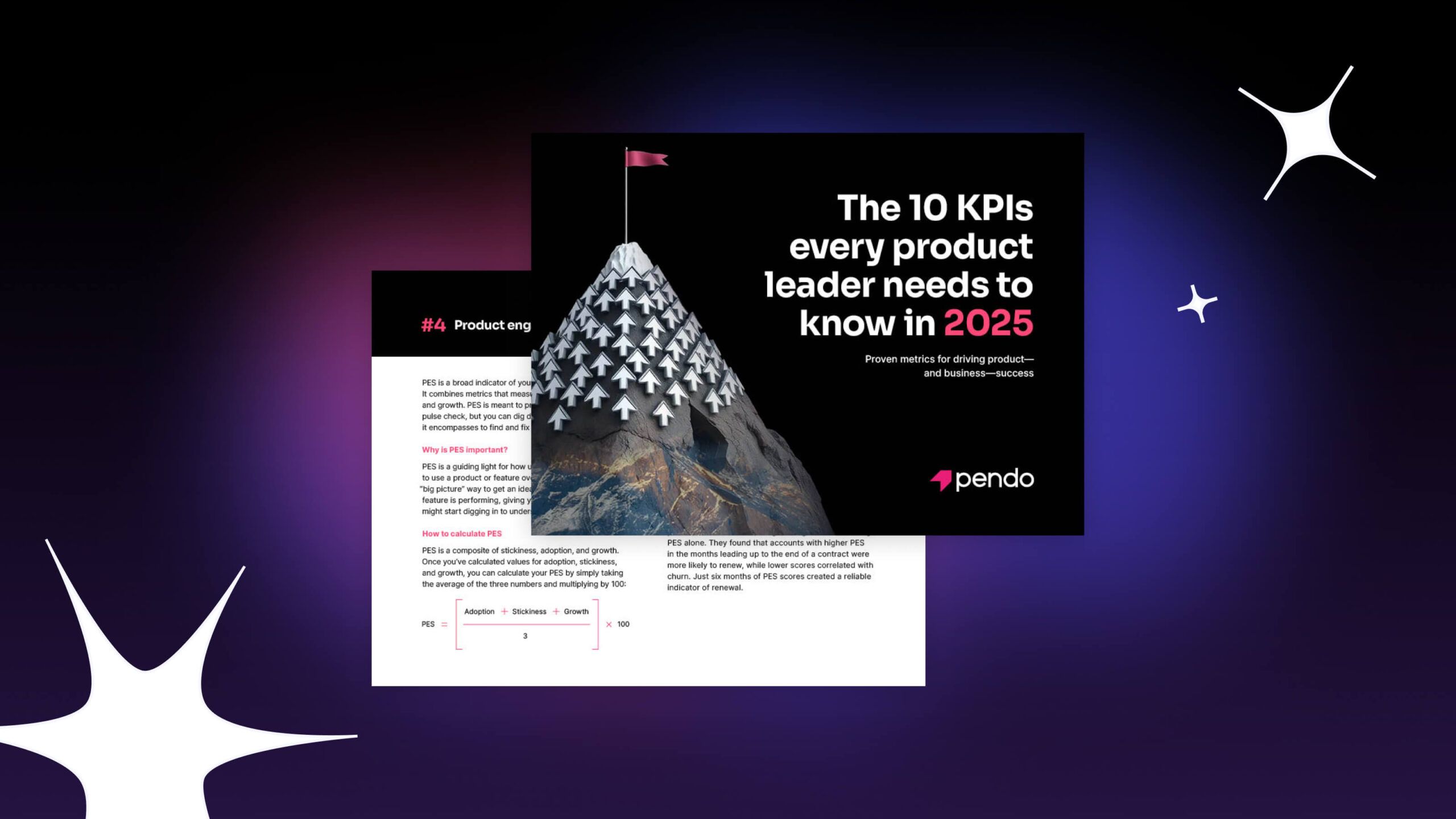Product analytics dashboards have been around for years. For many SaaS companies, they’re a way to track progress and report on key metrics, and a ubiquitous tool that’s part of the daily cadence of running a business. And yet, most dashboards are a waste of time—created in haste, viewed once or twice, and then thrown into the digital graveyard.
As part of the team responsible for Pendo Dashboards, I feel that pain. Dashboards can be a powerful tool for change, but they keep falling short of expectations. Why? Product analytics dashboards aren’t built to meet the needs of today’s world—where teams are distributed, and business needs are ever-changing.
At Pendo, we obsess over helping product managers do their best work. And we’ve found that product teams work best when they’re able to centralize product data, share context about that data, and collaborate with teammates—all in real-time. Methods can vary, but we think this collaboration can and should happen inside dashboards themselves. So we’ve rebuilt the Pendo Dashboard experience to deliver exactly that.
Here’s what we believe makes for an effective dashboard, and the latest Pendo updates that will help product teams unlock these benefits:
1. Great dashboards centralize data
For a product team to be successful, access to up-to-date, relevant product data is critical. Pulling product data together into one cohesive dashboard helps teammates align on what’s relevant to the problem they’re solving or product they’re tracking. Our latest updates to Pendo’s Dashboard widgets help product managers bring together more data so they can draw actionable insights:
Goals widget
When building any product, setting a goal is essential for guiding a team towards business growth. In fact, a goal often serves as an anchor that can motivate people and rally teams. Today’s dashboards aren’t effective because they lack clear direction guided by goals. Now, from any Pendo Dashboard, you can set up a product usage goal by selecting the key feature clicks, page views, or track events and setting a usage target.
Let’s say you’ve recently launched a new feature: the ability to add Notes to an opportunity within a Customer Relationship Management (CRM) application called Acme CRM. With this new launch, you want to track how it’s performing. This is a great opportunity to collaborate with your team to set a product usage goal and place it at the very top of your new “Feature Launch” dashboard. That way, team members can easily see progress towards the goal and ensure that their efforts remain focused on achieving it.
NPS, Polls, and Data Explorer widgets
We’ve improved the NPS and Polls widgets to now include more data. With the addition of the Data Explorer widget, you can get a holistic view of your product by combining direct user feedback data alongside product usage data.
-
- The NPS widget has four new configurations and visuals to better understand how users feel.
- The Polls widget includes additional data such as poll responses, average and median scores, and better visualizations.
- The Data Explorer widget allows you to create or access Data Explorer reports right from any dashboard, for an easier workflow.
Using the same example of the new “Notes” feature, you can use the NPS widget to track how users feel about the feature. Have a follow-up question to ask your users? Launch a short poll and surface those responses with the Poll widget. And if you want to dig deeper into feature usage metrics, pull in Data Explorer visuals to track and compare trends across segments or time periods, right on the same dashboard.
2. Great dashboards contextualize data
To understand data, you need the right context on the product or the problem to be solved, or even annotations on product data. Especially in our increasingly distributed world, providing context becomes even more important. This context gives data meaning that can help turn data into insights, and insights into action. We’ve introduced two dashboard widgets in Pendo to help product managers share context:
Embed widget
The Embed widget allows you to add new content such as designs, videos, and slides from your favorite apps. Want to share future plans to improve your recently-launched “Notes” feature? Use the embed widget to pull in the slides where you’ve documented the latest product plans.
Text Block widget
With the Text Block widget, you can add comments, links, and notes right next to your data to provide context and bring your dashboards to life. In the case of the “Notes” feature launch, you might want to add a short blurb on why the feature was built and for whom it was built to help align teams in a snap—and save a few meetings from your calendar.
3. Great dashboards help teams share data
If the past two years of the pandemic have taught us anything, it’s that remote work is on the rise and likely not going away. Product teams everywhere are being forced to figure out new ways to collaborate as they become more distributed. Since collaboration is the linchpin of success for product-led teams, we are especially excited to release new features that enable teams to share and co-edit data on any dashboard:
Subscription-level and user-level sharing
Our latest sharing capabilities allow you to share a dashboard with everyone in your organization or individual users within your organization. For example, you can share your “Feature Launch” dashboard with product leadership and the rest of your product team so everyone is on the same page about product performance and adoption.
Co-editing
A useful dashboard is both interactive and updated in real-time. Now, with the ability to co-edit dashboards, you can add users and give them permissions to edit your dashboard, too. With this, dashboards become the true place for product teams to collaborate and interact with each other. From sharing different perspectives and commentary to adding new pieces of data, you can now do all of this on a Pendo Dashboard. For example, your team can add insights gleaned from user feedback right on your “Feature Launch” dashboard for everyone to see.
With these new additions, we’re reinventing the Pendo Dashboard experience to make it one that unites teams around a shared set of data, so you can solve problems together. One that centralizes and contextualizes product data, so that everyone can get on the same page and make the right decisions, quickly. In the words of Stephanie Tanzar, Pendo’s senior director of product, “Even for our own product team, we’ve been able to use dashboards to collaborate, influence, and inform our stakeholders.” We’re excited to see how Pendo Dashboards can be a powerful tool for you, too.
Ready to build your own Pendo Dashboard? Follow the steps in this in-app walkthrough. If you are in the EU instance, you can access the walkthrough here.




